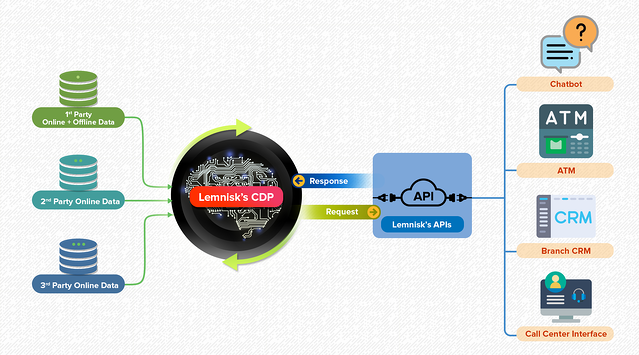Customer Data Platforms (CDPs) are gaining plenty of recognition in the Financial Services industry. Marketers in banking, insurance, and other financial sectors are now aware of the immense value that a CDP can bring to their digital engagement and conversion strategies.
A CDP enables financial marketers to get a single unified view of each customer. This is done by aggregating and unifying customer data from disparate sources. The unified view enables them to extract actionable and meaningful insights. These insights, in turn, facilitate the delivery of seamless hyper-personalization for customers.
After having made the decision to implement a CDP in their marketing technology stack, financial marketers aren’t very clear about one thing. How do they integrate multiple marketing systems with a CDP?
They often view this whole process as cumbersome and difficult. But in reality, the answer is quite simple, API (Application Programming Interface) and in this case, Data API, enables seamless CDP integration with numerous martech systems.
What is a Data API?
Data APIs are a set of APIs that will allow financial marketers to get a unified customer view and extract user-level data in real-time. They can access, transform and deliver data securely, quickly, and with very high performance.
The following diagram depicts how a Data API is used with Lemnisk CDP:

As seen above, first, second, and third-party customer data is fed into the CDP. The CDP is connected to various systems such as Chatbots, ATM, Branch CRM, Call center interface, etc. via a Data API. User-level data is available for all teams such as Marketing, Analytics, etc. Marketers can easily use the Data API to pull data from these systems into the CDP or vice versa.
What problems does a Data API solve?
-
Ensures that all marketing systems and programs are in sync and connected with all user aspects. These include Next Best Offer, interest in current products, channels reached on, current marketing segments the user is part of, and more.
- Draws data from a single interface by connecting multiple marketing systems.
-
Simplifies cross-channel integrations and increases marketing efficiency by eliminating data silos and reducing manual efforts.
Conclusion
If the major roadblock to CDP implementation is system integration, then using Data APIs can easily solve this problem. They are hassle-free and allow fast integration. Once proper system integration is accomplished, data transfer happens in real-time between the CDP and all connected martech systems.
So financial marketers delay no further, go ahead with your CDP implementation today and derive maximum value out of your marketing spend.
By Bijoy K.B | Senior Associate Marketing at Lemnisk

Leave a Reply